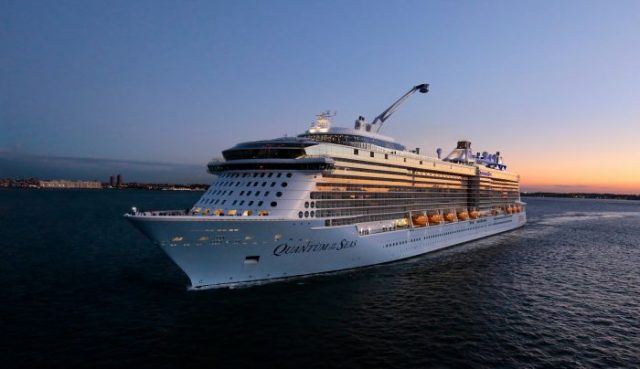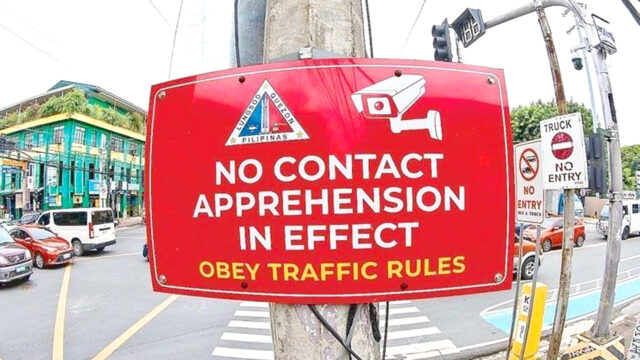When growth forecasts fail
LAST Monday’s issue of the BusinessWorld in big, bold font screamed that “GDP growth likely slowed in Q4 — poll.” With 20 analysts sharing their fearless forecasts, ranging from a low of 3.6% to a high of 5.8% for the last quarter of 2023, the median forecast stood at 5.7%. For the whole year 2023 forecasts, we saw a low of 5% and a high of 5.8%, with the median hovering at 5.5% — all below the official target of 6-7%.
Who else stepped forward to share his insights and prognosis?
Last Sunday, it was Bangko Sentral ng Pilipinas (BSP) Governor Eli Remolona who essayed his thoughts and said: “I think it’s going to be better than the third quarter because the second quarter was an aberration in terms of growth.” He must be referring to that quarter’s 4.3% growth due to the high commodity prices, the lagged effects of interest rate hikes, the decline in government spending, and slower global economic growth. But except for the fact that the second quarter 2023 did not benefit from election spending one year earlier, all the other factors for the slowdown continue to hold until today.
But as early as the third quarter, the growth momentum had quickened to 5.9%. Our economic managers must have made some progress in their commitment to accelerate the execution of government programs and projects, pursue fiscal stimulus activities and implement various mitigants to the effects of natural calamities like typhoons and heavy monsoon rains. They had to assure the Filipino people that something would be done to reverse the huge deceleration of economic growth in the second quarter. In particular, public spending was intensified so that even before the third quarter was over, the Budget department announced that some P4.7 trillion, or 90% of the entire 2023 budget, had been released to various agencies of government. By the end of September, some P5.12 trillion or 97% was released. There was practically nothing left for the last quarter of this year.
The problem is that in the interim before the announcement of the fourth quarter growth last Wednesday, we would always be assured that while difficult, it would not be impossible to hit even the lower end of the 6-7% target. Growth expectations were being managed although various analysts’ polls were showing more pessimism. Maybe not too many realized that it was indeed impossible to hit because a last quarter minimum growth of 7.4% was required to deliver on those ambitious growth targets.
Well, of the 20 analysts who predicted that growth in the fourth quarter would slow down, the announcement by the Philippine Statistics Authority (PSA) of the Q4 GDP and the whole year 2023 output growth proved half of them to be too optimistic. They must have been captivated by the sirens’ song. They projected fourth-quarter growth rates higher than the actual Q4 output growth of 5.6% compared to the final third quarter 6% growth. Only one of the other 10 hit it spot on at 5.6%, while the rest projected between 3.6% and 5.5%.
For the whole year 2023, the PSA validated that five analysts got it right at 5.6%. Another five were one percentage point on either side of the actual number, 5.5% and 5.7%. To be fair, everyone was quite close to reality in their macroeconomic analysis.
There was some convergence as to reduced demand and consumer spending in the last three months of 2023. Feeble export growth due to sluggish global output would not allow higher levels of production and export to traditional markets. We never expected that some would argue that government spending would pick up when only a few drops were literally left in the national budget in the last quarter. Actual government spending decelerated sharply to 1.8% after a third quarter pick up of 6.7%. The full year contribution of the government trickled down to 0.4%.
We find it incredible to hear the explanation of the National Economic and Development Authority (NEDA) that “it was intentional that growth of government spending was not high in 2023 because we want to achieve that fiscal consolidation which means lowering the fiscal deficit and the government debt.” This contradicts their press statements for the last three quarters which assured us that catch-up plans would be implemented and infra, social protection, education, and livelihood projects would be accelerated. We know that fiscal consolidation may be advanced by growing revenues to fund higher expenditure to attain two simultaneous objectives: sustain high economic growth and avoid higher fiscal deficit and public debt.
How then does one pursue build, better, and more in the context of growth, growth, and growth with modest spending?
Our own take is that what also worked against all economies of this world are the global headwinds. In 2023, global growth stalled from 3.5% in 2022 to 3% in 2023. Indeed, our exports were hit seriously as they accounted for a sizeable share of GDP. That’s why we find the recent upgrade of the Philippines’ 2024 economic growth by the IMF counter-intuitive because of their expectation of a stronger recovery in investments and exports.
But the IMF itself, in the World Economic Outlook, anticipates a further deceleration of 2.9% global growth in 2024 from last year’s 3%.
With it, domestic manufacturing and processing output could be one of the collateral costs. What is happening in the Middle East and Eastern Europe are not exactly helping expand global trade and investment. Oil prices remained precarious in the last quarter to this day, and therefore we should expect high inflation to persist and pull down even our domestic economic performance through mostly lower consumer spending. Uncertainty in the world produces reticence in investment and production, the propensity to pursue business activities and give jobs to people.
We have other reasons to be less optimistic about growth last year.
El Niño is one big elephant in the room. We are not sure if we have been at all bothered enough by the reported prolonged dry spell to take more decisive action. We wish to be proven wrong but already crop production may not bring in the expected harvest to produce positive growth this year. The last quarter of last year simply eked out a small positive. In addition, swine production is hamstrung by the sustained onslaught of the African Swine Fever in at least 134 barangays in 58 municipalities. We don’t know whether the reported fish deficit in the last quarter of 2023 could spill over to 2024.
Last quarter’s purchasing managers index (PMI) also pointed to lower levels compared to year-ago levels. With a good correlation to actual economic performance, the PMI is a good predictor of future growth.
If indeed high inflation restrained consumption and investment, the lagged effects of recent wage adjustments in practically all regions in the country could have also reined in business activities in the last quarter.
Yes, only Vietnam seemed to have overtaken us in growth performance in 2023 to join the fastest growing economies in the world and in Asia. But we still have a lot of catching up to do as a result of the deep recession we sustained in 2020 due to the pandemic. We declined by more than 10% and frustrated our plan to quickly break out of the lower middle-income trap. Economic scarring is real, and it is felt in our labor market and educational institutions. We have a poverty of skills and quality education.
We reiterate that beyond that, downside risks to growth appear to be dominant. El Niño will be prolonged until the end of the first half of 2024; oil prices could surge again; the political upheaval associated with the Philippine Charter change is not only a turn off, but also a killjoy; the ongoing China-Philippine territorial disputes over the West Philippine Sea could have some unwanted economic effects; the uncertainty surrounding the next US Fed move; and of course, the broadening geo-economic fragmentation could put a cap on our external trade and investment.
When our economic forecasts fail, it is better to look at the economic analysis underlying those quantitative outcomes for direction, for broad guidance.
Considering the so-called degrees of freedom when doing those forecasts, we would say they did not fail. They just missed the point.
Diwa C. Guinigundo is the former deputy governor for the Monetary and Economics Sector, the Bangko Sentral ng Pilipinas (BSP). He served the BSP for 41 years. In 2001-2003, he was alternate executive director at the International Monetary Fund in Washington, DC. He is the senior pastor of the Fullness of Christ International Ministries in Mandaluyong.



![solar-panel-generates-green-electricity_661209-25 [freepik]](https://www.bworldonline.com/wp-content/uploads/2024/02/solar-panel-generates-green-electricity_661209-25-freepik-640x489.jpeg)







